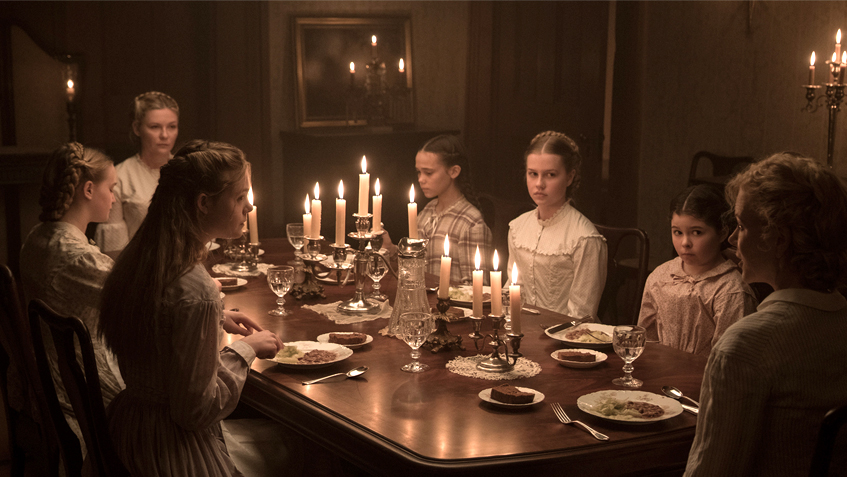

A young girl (Oona Laurence) wanders through the forest, singing softly to herself, searching of mushrooms. It is 1863 and we are in the deep South. Canons rumble far off. The air is drenched in light, and cicadas maintain a thrum of sound. With a start, the girl happens upon a Union soldier (Colin Farrell), rumpled at the base of a tree. Thus begins The Beguiled, Sofia Coppola’s remake of the 1971 movie of the same name.
This opening scene effectively samples most of the rest of the movie. Coppola’s command of the sticky Southern atmosphere is immediate and potent, and her use of symbolism is rife, Freudian, and probably a little heavy-handed. The mushrooms which open the movie are not incidental and their phallic/deadly symbolism is one of many examples of how over-active every metaphor is. There are no set pieces that are not pursued: no pistols introduced that are not fired in every sense of the phrase.
The soldier, John McBurney, is brought back home with the girl, to a boarding school that had been evacuated by all but five young students, one teacher, and the director. The triad of stars — Elle Fanning, Kirsten Dunst, and Nicole Kidman — play a multi-generational tableau of women piqued by the presence of the enemy soldier in their midst. It’s not a complicated story, and things don’t go well.
Despite this narrative tightness, though, the movie still exhibits Coppola’s typically sleepy direction. She has lost none of her taste for lens flares and tracking shots, but as with other films like The Virgin Suicides, Lost in Translation, and The Bling Ring, I always walk away a little frustrated, uncertain if she has ideas behind her style beyond simply demonstrating her unhurried sensitivity.
What could be a movie that soaks you in tension and dread somehow comes out a little light. Coppola is too tentative to photograph the degeneration that was necessary to execute The Virgin Suicides, and she is equally unwilling to allow The Beguiled to unravel too far. It’s a strange flaw to have, because she brings it upon herself so deliberately with her chosen subjects. She seems drawn to movies that thematically demanded an artist capable of photographing chaotic decrepitude but unable to commit to it herself.
This should be a macabre Southern tale, but Coppola pruned some of the more unsavory elements of the original. In a case such as this, when you take the pulp out, what is left? Are we to take the coven of “vengeful bitches” seriously? Because I left a little worried, that in effect, this movie dignified a dopey misogynistic fantasy in a misbegotten attempt at directorial respectability.